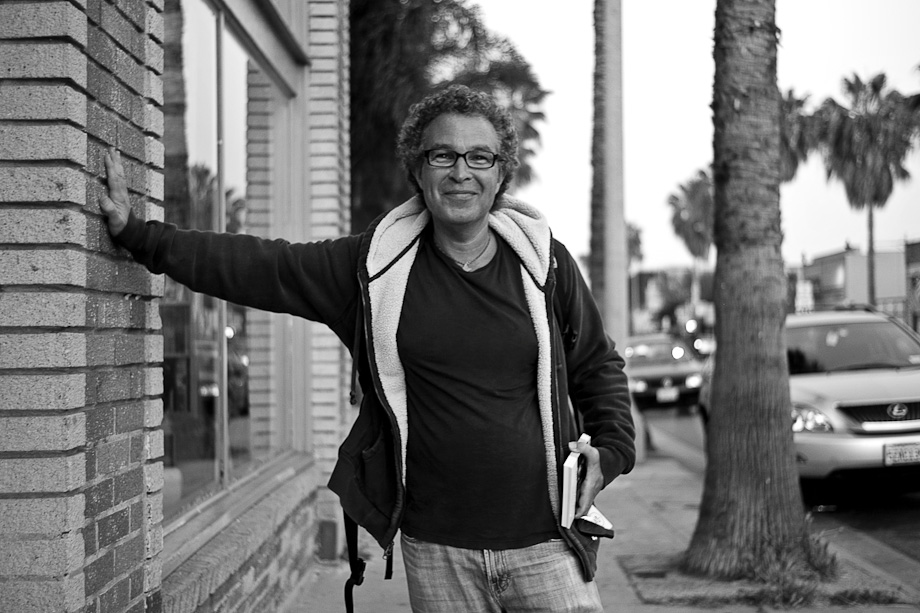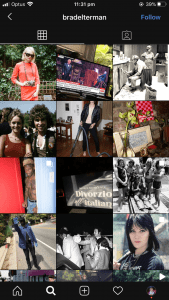BRAD ELTERMAN (Born: 19 September 1956)

ShootTokyo, 2020, A conversation with 70s Iconic Photographer: Brad Elterman — ShootTokyo, <https://shoottokyo.com/blog/conversation-70s-iconic-photographer-brad-elterman> [Accessed 18 April 2020].
An example of a photography/media practitioner, who has make the switch from Analogue Photography to Networked Photography across his career, we look to Photographer Brad Elterman. “Originally from the San Fernando Valley, Elterman rose to acclaim early, managing to save enough from the proceeds of his photo sales to German and Japanese magazines Music Life, Rock Show and Freizeit to land his own West Hollywood apartment while still in his teens. Ingratiating himself as the go-to biographer of the Sunset ‘in’ crowd, the young photographer soon gained access to the kind of Hollywood inner-sanctums unthinkable now in an era where even the youngest stars’ careers are micro-managed by publicists, managers and social media gurus (Elterman, B. 2020)”. “In a time when most photographers decided to portray these artists performing on stage under the glitz and spectacle of the limelight, Elterman decided to point his camera in the opposite direction…He portrayed these idols in their downtime, presenting them as normal people that watched TV, ate fries and played soccer. Curiously, while he renders these superstars as vulnerable human beings, he does it with such taste and respect, it actually exalts them… His work has been published almost everywhere, from NME, Melody Maker, Rolling Stone, and the National Enquirer, to now extinct magazines like Popcorn in Germany, Pop Foto in Amsterdam, and Rock Show in Tokyo (Feature Shoot, 2020)”. Elterman, making his career in the 70’s, physically went through the shift from Analogue Media to Networked Media himself – now taking to Instagram to showcase both his analogue works from the past, as well as images taken from his phone and shared to the platform as it happens; Making use of the platforms algorithm in two ways, promotionally (in the way he promotes his own image and showcases his work) and in the way that he uses its ability to instantaneously connect with the world.

“I have been so blessed to have had the most incredible talent in front of my camera during the 70’s and today.”
We can look to two examples of this when we take a deeper observation of his profile. The first image we look at is a photograph from the Analogue Photography era, reposted and repurposed on his Instagram page. Here we see one of the many images of Joan Jett that Elterman took in the 1970’s. Elterman has posted it to his Instagram with the intention to promote his self-image through highlighting and showcasing his prior works. Then when we look to the second image (posted April 9, 2020) from his Instagram profile, we see that he has posted a photograph, clearly taken from his mobile phone (we can presume, for this examination, he owns an iPhone – one of the most popular mobile/camera phones on the market), and posted to his Instagram profile with the intention to use its platform to connect with the world in real time.
The first image of Joan Jett was taken in the 70’s, meaning that it was created using Analogue Photographic methods. Due to the fact that he was a young teen when beginning his photography journey, and the fact that the image was authored in the 70’s, we can presume Elterman used a 35mm Point-and-shoot camera – camera’s, that were popular at the time. We then can assume he then would have had chosen his negatives through a magnifying glass, ensuring he kept dust off the negative as he placed it in the enlarger; exposed onto photographic paper; the photographic paper was then put through trays of developer, stop bath and fixer and the printed photo was hung up to dry with pegs.
While the second image was published directly to Instagram, and distributed no further, some people may repurpose this in posting the image to their own SNS profiles (i.e. Fan profiles). However, the first image of Joan Jett was taken as one of many images that Elterman took of Jett during their private time spent together over the 70’s, and Jett being one of pop musics biggest icons – the images were (and still continue to be) published and distributed in magazines, and now online on websites all over the world wide web. An example of this is, is presented in an article published by Vice Magazine, where the author discusses the exact photos of Joan Jett with Elterman, and what exactly happened to the negatives in terms of publishing and distributing, stating “Back in the 70s, when I was super prolific with my camera, I would mail my color slides and black-and-white prints to magazines all over the world—I did keep and file my black-and-white negatives. A few years ago, I was in Tokyo and went back to Shinko Music, which published the glossy Music Life and Rock Show magazines. They published everything I sent them, and I became their Los Angeles correspondent. When I got there, everyone was gone except for an elderly security guard who told me that everyone left years ago and that he had no idea what happened to their archives. This wasn’t an isolated phenomenon. Every single one of the publications I had sent to in the 70s folded, and their archives vanished. Thousands of analog photos were tossed and left for dumpster divers.”
CITATIONS
- The Writing Center, ‘Literature (Fiction)’, viewed 10 July 2018. <https://writingcenter.unc.edu/tips-and-tools/literature-fiction/ (Links to an external site.)>
- The Writing Center, ‘Film Analysis’, viewed 10 July 2018. <https://writingcenter.unc.edu/film-analysis/ (Links to an external site.)>
- Palmer, D 2014 ‘Mobile Media Photography’, in The Routledge Companion to Mobile Media, (eds) Goggin G., Hjorth L., Routledge, New York pp. 245.
- Brad Elterman, 2020, Brad Elterman, <http://www.bradelterman.com/> [Accessed 18 April 2020].
- Feature Shoot, 2020, Born to be bad: Brad Elterman, one of music’s most influential rock ‘n’ roll photographers – Feature Shoot <https://www.featureshoot.com/2019/06/born-to-be-bad-brad-elterman-one-of-musics-most-influential-rock-n-roll-photographers/> [Accessed 18 April 2020].
- ShootTokyo, 2020, A conversation with 70s Iconic Photographer: Brad Elterman — ShootTokyo, <https://shoottokyo.com/blog/conversation-70s-iconic-photographer-brad-elterman> [Accessed 18 April 2020].
- Brad Elterman (@bradelterman) profile on Instagram • 3,448 posts, 2020, Brad Elterman (@bradelterman) profile on Instagram • 3,448 posts <https://www.instagram.com/bradelterman/> [Accessed 18 April 2020].
- Vice, 2020, This Teen Took Candid Photos of the 70s’ Biggest Rock Stars – VICE. <https://www.vice.com/en_au/article/zmepp8/this-teen-took-candid-photos-of-the-70s-biggest-rock-stars> [Accessed 18 April 2020].



